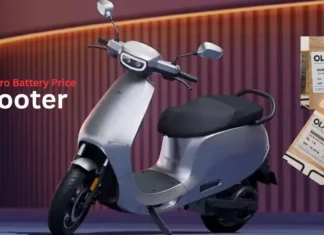
As the adoption of electric vehicles begins to increase in India, so does the supply of used lithium-ion batteries that later power these vehicles. A new NITI Aayog report estimates the country’s total lithium battery storage requirement at 600 GWh for 2021-30. As a result, the volume of recycling that comes from battery deployment will be 125 GWh by 2021-30, the New Delhi-based think tank said in its report on “India’s Outstanding Chemical Cell Reuse and Recycling Market”.
“Of this, almost 58 GWh from the electric vehicle segment alone with a total volume of 349,000 tons of chemicals such as lithium phosphate (LFP), lithium manganese oxide (LMO), lithium nickel manganese cobalt oxide (NMC), lithium nickel cobalt aluminum oxide (NCA ) and lithium titanate (LTO),” the report states.
The report considers annual demand from across the grid, consumer electronics, behind the meter (BTM) and electric vehicle functions to arrive at cumulative demand. In general, battery replacement occurs when their efficiency drops below 70%-80% of the original nameplate capacity, and these batteries can further assist in the operation of many functions.
End-of-life EV batteries typically have 70 to 80% legitimate energy and can be reused in off-grid and behind-the-meter (BTM) functions, the report said. According to Niti Aayog, only 25% of retired electric two-wheeler and electric three-wheeler batteries are believed to be partially reusable for a long life of two to several years. much more.
Similarly, the 60% of retired batteries in electric quad bikes and e-bus batteries can further assist traffic in many functions, the report added. About 125 GWh of lithium batteries ready for recycling by 2030: Niti Aayog He added that the reuse ratio for parts of electric two-wheelers and electric three-wheelers is kept at a reduced charge because most batteries cannot be reused if their efficiency drops below 70% to 80% of the original storage capacity on the nameplate because its capacity to hold a load further reduces.
“For the same reason, the expected secondary life of such batteries is also low. The amount of reuse that comes from electric ATVs and buses is greater, so we expect it to be reused in both small and large-scale warehouses. It is estimated that 60% these batteries can be reused in continuous storage applications.
When the batteries reach the end of their useful life, they are recycled in the same segment,” the report points out. In terms of funding, the report mentions that the country will see a combined funding of $47.8 billion between 2021 and 2030 to cover the demand for 600 GWh across all areas of battery storage. Approximately 63% of this fund portfolio will be line in the electricity movement phase, which has been taken over by grid functions (23%), BTM functions (07%) and CEA (08%).
Why batteries, Why now?
Energy Security: India relies on imports for much of the energy value chain, particularly commodities such as oil and natural gas, but also products such as solar panels and lithium-ion batteries that are essential for decarbonisation. As the energy transition accelerates, domestic battery production will be critical to ensuring a higher level of energy security for the country.
Air Pollution: Domestic air pollution remains a growing challenge for India. Of the 30 most polluted cities in the world, 22 are in India8 and as urbanization accelerates, this problem is bound to grow. Electric cars are essential to clean up the distributed pollution of urban traffic.
Electric Vehicle Ambition: To achieve a leadership position in this technological disruption, India has set an ambitious goal of achieving the EV 30@30 targets. for batteries.
Industrial Development and Indigenization: Battery manufacturing presents an opportunity to partake and become a leader in a global sunrise industry and accelerate indigenization of the energy and transport value chain.
Falling Battery Costs: As battery costs decrease, many end-use applications become more economically feasible. This trend will only accelerate as battery performance continues to improve along with falling prices.
Global Climate Action and the Need to Integrate a Higher Share of Renewables: With current NDC targets boosted by the recent announcement of net zero India’s 2070 target is to accelerate decarbonisation efforts in line with global climate action momentum. India has committed to meet 50% of its energy needs from renewable energy by 2030, which includes a target of 500 GW of non-fossil fuel power capacity by 2030. The development of battery technologies will be critical to achieving this of these targets.
Read Also: 9 Electric bicycle charging tips for long battery life



